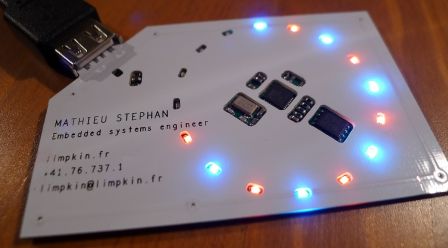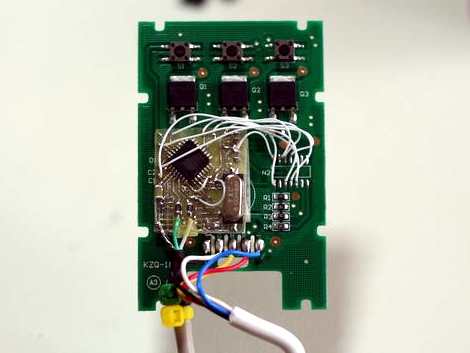[Limpkin] decided to give the whole embedded business card thing a try. Here is his finished project, a low-profile mass storage business card that doesn’t cost an arm and a leg. Sure, the $6 price tag could score him a hundred paper cards, but those don’t light up like this one does!
The main components on the card include an AVR microcontroller, a flash memory chip, and an ESD protection chip. The latter is to make sure a static shock on the USB connector doesn’t zap the MCU. Speaking of, he went with an AT90USB162 which runs from an external 8 Mhz oscillator. Sure, it’s not the fastest thing out there, but since there’s only 16 Mb of flash on this card we don’t think you’ll notice any data transfer delay. The processor is running the LUFA stack and has two flavors of firmware. One that enumerates as an HID keyboard to automatically use keyboard shortcuts to launch a browser and load up his website. The other implements a mass storage device.
If you don’t like the electronic route, you could always go with some laser cut metal. We’ve heard that [Kevin Mitnick’s] business card has snap-out lock picking tools kind of like these.














